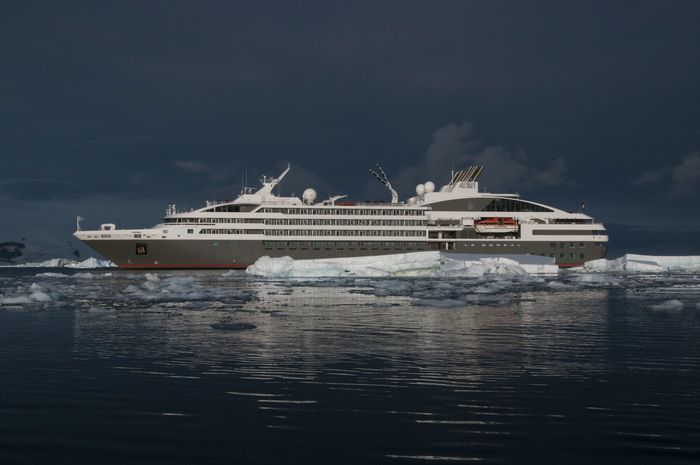From Scotland to Spitsbergen
Set off on a 14-day PONANT expedition cruise that will take you from marvellous Scottish shores to the Norwegian island of Spitsbergen. Aboard Le Boréal, you will discover the preserved landscapes of Northern Europe and the boundaries of Norway and its island, which is among the world’s northernmost.
Departing from Glasgow, Scotland's warm cultural capital with a rich artistic and architectural heritage, you will set sail for the Hebrides archipelago. You will make a stop on Iona, the birthplace of Christianity in Scotland, home to an impressive abbey, and you will discover Callanish on the Isle of Lewis. This all-new port of call will take you back in time to between 2900 and 2600 BC, the period during which the island’s megalithic site would have been created… Before the circle of standing stones, aligned with the cardinal points, the mystery remains entire, the emotion is palpable.
Le Boréal will then sail towards the Shetland archipelago and the island of Mousa, which is home to Scotland’s best-preserved Broch - constructed in around 100BC, this tower-shaped fortification served to defend against invaders.
Further north, you will marvel at the mysterious charm of the Lofoten archipelago. These islands have landscapes of surreal beauty alternating between sea, spectacular fjords, mountain slopes, fine sand beaches and huts on stilts.
Your Arctic adventure begins with your stopover in Tromso. You will also sail by Bear Island, halfway between the North Cape of Norway and the South Cape of Spitsbergen. You will see many seabirds, such as guillemots or Atlantic puffins, which have found refuge in the vast cliffs of the south of the island.
Even further north, you will reach Spitsbergen, the main island of the Svalbard archipelago. In the land at the end of the world, millennial glaciers, steely mountains and spectacular fjords form the backdrop for whales, arctic foxes, walruses and the kings of their realm, polar bears.
Your cruise will end in Longyearbyen.
We are privileged guests in these extreme lands where we are at the mercy of weather and ice conditions. The itinerary, landings on certain sites and the observation of certain wildlife cannot be guaranteed. They vary from day to day, making each PONANT cruise a unique experience. The Captain and the Expedition Leader will make every effort to ensure that your experience is as rich as possible, while complying with the safety rules and instructions imposed by the AECO.
When searching for a luxury yacht expedition cruise, there’s one name above all else that you need to know – Ponant Cruises. Founded in 1988 by former French Merchant Navy officers, Ponant combines succulent luxury with authentic adventures on all seven continents.
From classic Mediterranean itineraries and Caribbean sailings, to bucket-list expeditions around Greenland and Antarctica, Ponant cruises proudly counteract the banality of mainstream voyages with a unique take on the concept of small-ship cruising. It’s the absolute trip of a lifetime.

A superb mega-yacht with 132 cabins, she is the fruit of the expertise of the Italian Fincantieri shipyard and French sophistication, as interpreted by designer Jean-Philippe Nuel. Le Boreal remains faithful to Ponant's philosophy - to create a unique atmosphere, a subtle blend of luxury, intimacy and well-being.





